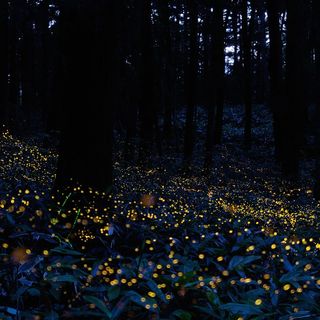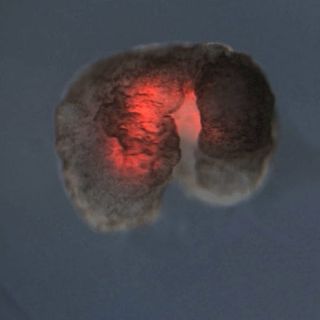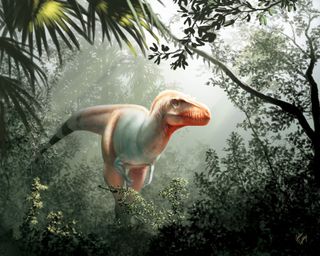A new dinosaur has been discovered in Canada. Its name? Thanatotheristes — Greek for “Reaper of Death.” More properly, its name is the Thanatotheristes degrootorum, the latter a reference to the family — the De Groots — who originally stumbled upon the fossils while out for a walk 10 years ago.
The Reaper is a tyrannosaurid, an early cousin the Tyrannosaurus rex — smaller, but no less vicious. With a scar-covered face and ombre skin, artists’ renderings suggest deadly beauty. T. degrootorum also had serrated teeth and a taste for flesh.
“It definitely would have been quite an imposing animal, roughly 8 feet (2.4 meters) [tall] at the hips,” lead researcher of the fossils, Jared Voris, a doctoral student of paleontology at the University of Calgary, in Canada, told LiveScience. It also would have stretched about 26 feet (around 8 meters) long, from head to tail.
An artist’s rendering of the newly discovered Thanatotheristes degrootorum, a.k.a., The Reaper of Death, as it would have appeared in the wild. (Image Credit: Julius Csotonyi)
The Reaper was a tyrannosaurid at the cusp of the family’s dominance across Canada and the northern U.S; earlier tyrannosaurids were smaller than the average modern human and overshadowed by bigger and more dangerous dinosaurs, like the allosaurus, reports Maya Wei-Haas and Michael Greshko for National Geographic. The Reaper, with more physical heft than its predecessors, roamed this area as a dangerous predator in its own right roughly 79.5 million years ago. Over the next 13.5 million years, the T. rex evolved from mid-eon tyrannosaurids like the Reaper, into the apex and — at roughly twice the Reaper’s size — much larger predator of its time.
“It’s the oldest known tyrannosaurid from northerly North America,” study co-author Darla Zelenitsky, a paleontologist at the University of Calgary, told National Geographic.
Related on The Swaddle:
DNA From 6,000‑Year‑Old Chewing Gum Used to Build Portrait of a Neolithic Girl
But before the Reaper had a name, it was just a jumble of old bones, long forgotten, along the shore of the Bow River in Canada. A local couple, John and Sandra De Groot, discovered them in 2010 and alerted the Royal Tyrrell Museum. The site eventually yielded skull and jaw fragments. Later, skull fragments from another Reaper were discovered nearby. For nearly a decade, the bones languished, cataloged but unclassified, at the museum. In 2018, Voris recognized it as an unidentified species and began studying it.
From the skull fragments, Voris and team were able to determine the Reaper had a unique feature: vertical ridges running from its eyes down its snout.
“These ridges are not like anything we’ve ever seen before in other tyrannosaur species,” Voris told LiveScience. “Exactly what the ridges do, we’re not quite sure.”
They also determined it had a roughly 4-inch-long scar on its face, likely from fights with other dinosaurs. Some of those fights may have been over meals; the only other dinosaur fossils found near the Reaper’s bones, and from the same rock layer, are from peaceful, plant-eating dinosaurs, which Zelenitsky surmises were a staple of the Reaper’s diet.
The Reaper makes for a good story. The name itself destines it for a place in any future Jurassic Park reboots, as well as within children’s collections of dinosaur figurines. But ultimately, it provides one more piece in the puzzle of predators past — a part of the Earth’s history and therefore, of ours.





